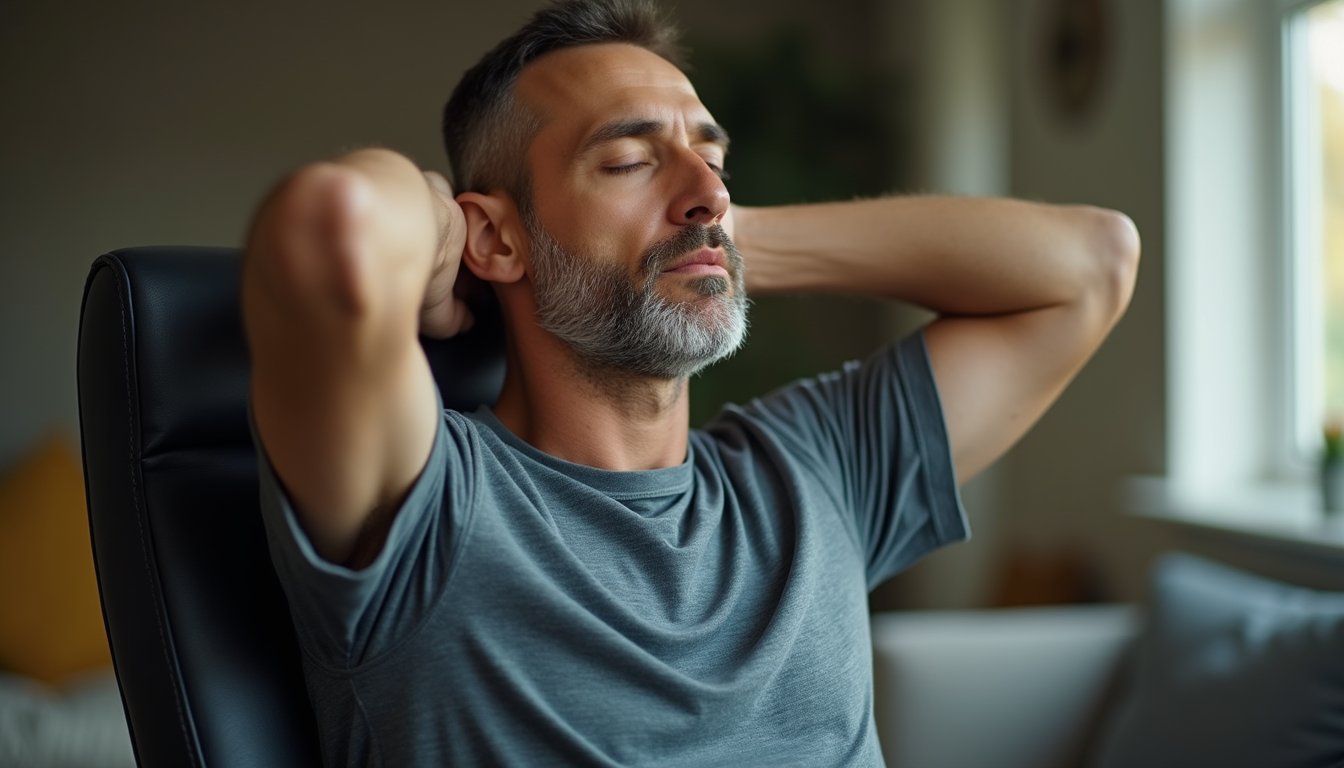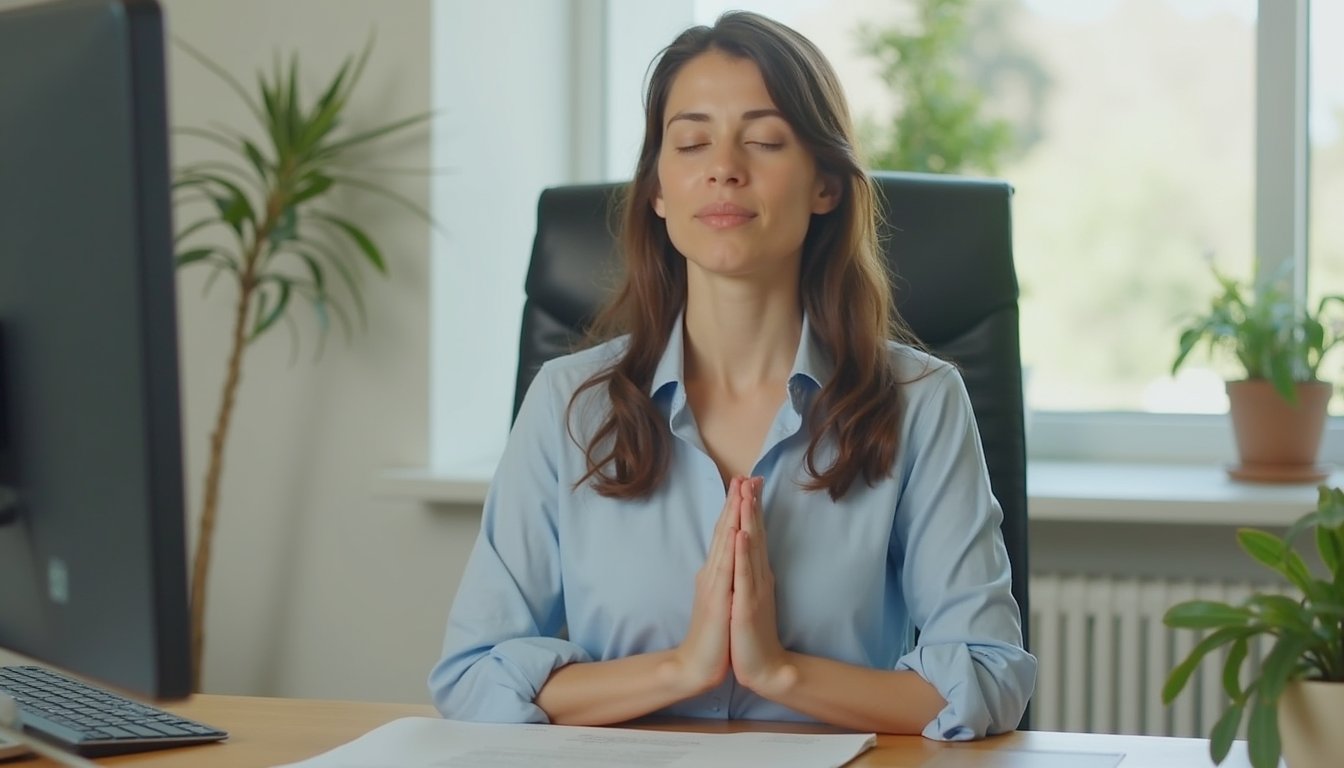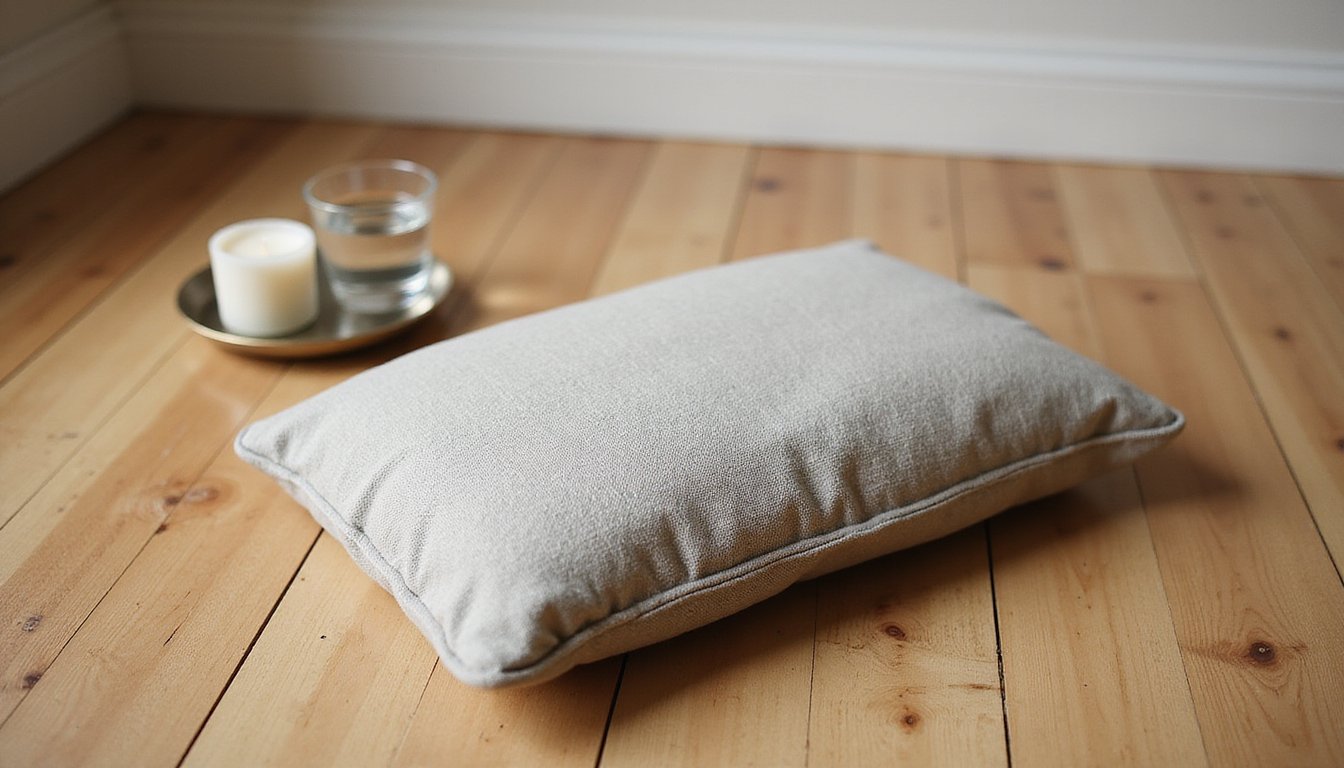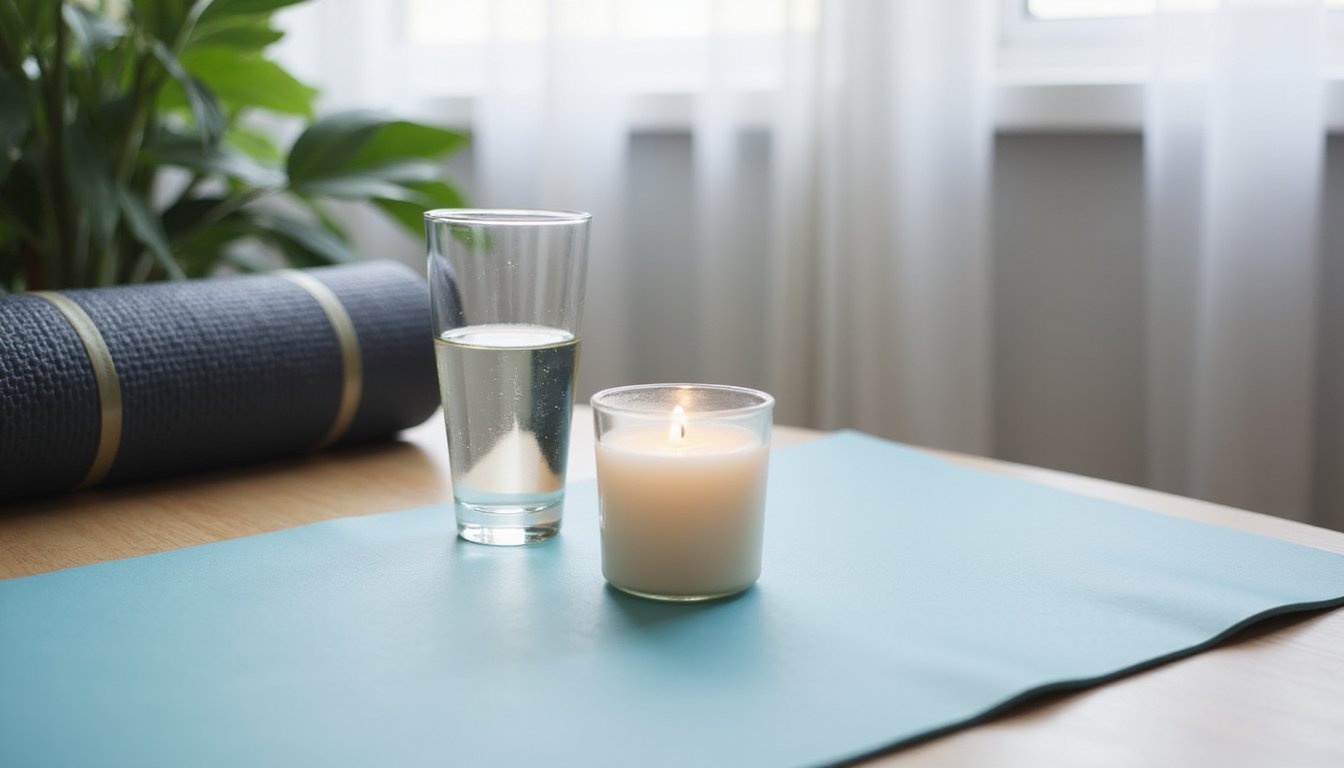When you’re experiencing an anxiety attack, try box breathing initial: inhale for 4 counts, hold for 4, exhale for 4, hold empty for 4. This proven technique activates your parasympathetic system within minutes, naturally calming your stress response. Diaphragmatic breathing at 6-10 breaths per minute also optimizes heart rate variability and decreases stress hormones. Research shows these methods are 99.2% effective at regulating breath patterns. Multiple evidence-based approaches offer both immediate relief and long-term anxiety management.
Understanding Anxiety and the Power of Breath Control

While anxiety disorders affect nearly one-third of adults globally, understanding the relationship between breath and anxiety provides a powerful tool for managing symptoms. When you’re experiencing anxiety, your sympathetic nervous system triggers physiological arousal reduction, leading to rapid breathing, increased heart rate, and muscle tension. Dysfunctional breathing patterns are a clear indicator of anxiety disorders and require targeted treatment approaches. Research shows that effective anxiety management comes from human-guided training and consistent practice over time.
Your breathing pattern directly influences your body’s stress response. Fast, shallow breathing can intensify anxiety and even trigger panic attacks, while controlled breathing techniques promote parasympathetic activation augmentation, naturally countering the fight-or-flight response. Research shows that slowing your breath rate correlates with significant improvements in anxiety symptoms and general mood. The simple practice of cyclic sighing breathing has demonstrated the greatest daily improvement in positive feelings compared to other breathing techniques. By learning to regulate your breathing, you’re engaging a scientifically-proven method to reduce anxiety and build stress resilience through improved heart rate variability.
Quick-Relief Box Breathing Technique for Immediate Calm
When anxiety strikes, box breathing offers a powerful, evidence-based technique for achieving rapid physiological calm. This method creates a seamless mental shift from distress to composure, with tangible physiological effects occurring within minutes. Developed from ancient pranayama practices, this technique has stood the test of time.
Box breathing rapidly shifts both mind and body from anxiety to calm through deliberate, structured breathing patterns.
To practice box breathing effectively:
- Visualize a square while seated or standing, breathing up one side for 4 counts
- Hold your breath at the top for 4 counts, maintaining steady rhythm
- Exhale down the opposite side for 4 counts, feeling tension release
- Hold empty lungs for 4 counts before starting the next cycle
The practice is most effective when performed in a quiet, stress-free environment for optimal results. Box breathing helps you activate the parasympathetic system to naturally calm your body’s stress response.
Research confirms 99.2% effectiveness in regulating breath patterns during anxiety. You’ll notice reduced heart rate, lowered blood pressure, and decreased cortisol levels within 7-10 cycles. This portable, equipment-free technique works just as well before, during, or after anxiety triggers.
The Science Behind Diaphragmatic Breathing for Panic

Because diaphragmatic breathing directly modulates the nervous system’s stress response, it serves as a powerful physiological intervention for panic attacks. When you engage in deep, slow breathing, you’re actively shifting your sympathetic/parasympathetic balance in the direction of a calmer state, reducing key physiological markers of stress like elevated heart rate and blood pressure.
Research shows that breathing at 6-10 breaths per minute optimizes your heart rate variability and blood oxygen levels while decreasing stress hormones like cortisol. This breathing pattern also counteracts hyperventilation, which often triggers panic symptoms. The most efficient muscle for breathing, your diaphragm, is key to achieving these benefits. By activating your diaphragm, you’re increasing venous return to your heart and promoting a more regulated autonomic response. The technique is especially valuable since it costs nothing except an initial time investment to learn proper form. Studies demonstrate that consistent practice reduces both the frequency and intensity of panic attacks, with benefits lasting up to six months. While the technique may feel awkward initially, natural belly breathing can be observed in babies and infants who haven’t developed poor breathing habits.
Simple Steps to Master Resonant Breathing
Since mastering resonant breathing requires a systematic approach, understanding the core technique’s parameters will set you up for success. Respiratory rhythm optimization centers on achieving 5-6 breaths per minute, with breath cycle timing considerations focused on equal inhale-exhale durations. The technique mirrors the patterns found in many traditional prayers and chants. This practice engages the phrenic nerve to enhance blood circulation throughout the body. Practicing abdominal breathing triggers the release of acetylcholine neurotransmitters, promoting a state of relaxation and calmness.
To master this evidence-based technique:
- Position yourself upright with a relaxed belly and lengthened spine, keeping your head lifted and eyes softly closed
- Inhale through your nose for 5-6 seconds while expanding your abdomen outward
- Exhale gently for the same duration, allowing your belly to contract fully
- Maintain this rhythm for at least ten cycles, gradually building to longer sessions
This scientifically-validated approach bolsters heart rate variability and vagal tone, effectively reducing anxiety through physiological coherence. You’ll notice improved emotional regulation with consistent practice.
Proven Breathing Strategies for Long-Term Anxiety Management

While many people seek quick fixes for anxiety, research demonstrates that systematic breathwork offers reliable long-term relief through multiple evidence-based approaches. Studies show that combining diaphragmatic breathing with regular practice triggers parasympathetic activation, reducing your fight-or-flight response and promoting emotional stability. Meta-analyses of 12 randomized controlled trials found small-to-medium effects for breathwork interventions in reducing stress and anxiety symptoms. Even in extreme situations, as demonstrated by a Marine in Afghanistan who used breathing exercises to remain calm and save his own life after a severe injury, these techniques can be remarkably effective. Practicing four daily sessions of 15-20 minutes each has proven particularly beneficial for reducing anxiety levels.
You’ll achieve the strongest results by implementing a consistent routine that includes cyclic sighing, with emphasis on extended exhales, and mindful breath awareness. These techniques build long-term resilience against anxiety when practiced just 5 minutes daily. Clinical research confirms that therapeutic breathwork protocols yield significant improvements in anxiety symptoms, particularly when supported by professional guidance. For ideal, preferred, or most effective benefits, focus on diaphragmatic breathing and HRV biofeedback techniques, which consistently demonstrate moderate effect sizes in reducing anxiety symptoms over time.
Frequently Asked Questions
Can Breathing Exercises Worsen Anxiety Symptoms in Some People?
Yes, breathing exercises can worsen anxiety symptoms in some people. You’ll find that individual differences in response play a pivotal role; what calms one person might trigger anxiety in another. Potential physiological arousal from certain breathing techniques, especially rapid or shallow breathing, can heighten anxiety symptoms and even trigger panic attacks in sensitive individuals. If you have panic disorder or high sensitivity to bodily sensations, you’ll need meticulously crafted breathing protocols.
How Long Should I Wait Between Different Breathing Techniques?
You’ll want to wait 5-10 minutes between different breathing techniques to let your body’s oxygen-carbon dioxide levels normalize. Don’t alternate techniques back-to-back, as this can cause dizziness or discomfort. Instead, focus on proper breathing form with one technique at a time, and space your practice sessions throughout the day. If you’re new to breathwork or have health conditions, consult a healthcare provider about safe time intervals between practices.
Should I Practice Breathing Exercises Lying Down or Sitting Up?
You can effectively practice breathing exercises either sitting upright or lying down comfortably; both positions are proven effective for anxiety reduction. If you’re new to breathing techniques or experiencing severe anxiety, start by lying down as it promotes better diaphragmatic activation and reduces fall risk. Once you’re comfortable with the techniques, try sitting upright, which is more practical for daily use and allows easier shift back to regular activities.
Are Breathing Exercises Safe During Pregnancy if Experiencing Anxiety Attacks?
Yes, breathing exercises are safe during pregnancy when experiencing anxiety attacks. You’ll find that evidence-backed techniques like deep diaphragmatic breathing and pursed-lip breathing can effectively manage anxiety without risking harm to you or your baby. However, you should consult your healthcare provider before starting any new practice to monitor fetal well-being and receive personalized guidance. Choose gentle techniques, avoid prolonged breath holding, and maintain comfortable positions that don’t compress your abdomen.
Can Children Effectively Use These Breathing Techniques for Anxiety Relief?
Yes, children can effectively use breathing techniques when properly taught. You’ll find that developing breathing routines through playful methods like bubble blowers and pinwheels helps kids master these skills naturally. Research shows that integrating breathing at school through animated videos and guided activities dramatically reduces anxiety in children. For best results, you should encourage regular practice in calm settings, making it easier for kids to apply these techniques during stressful moments.







